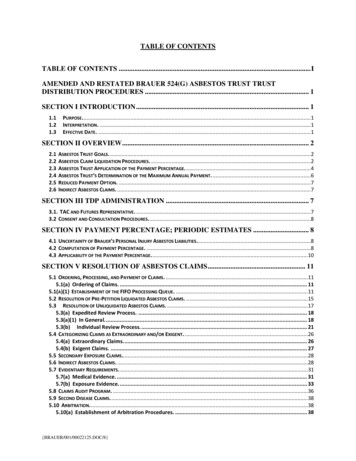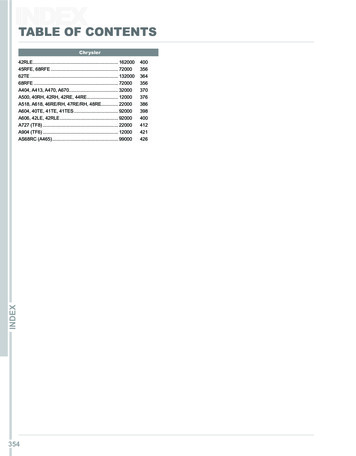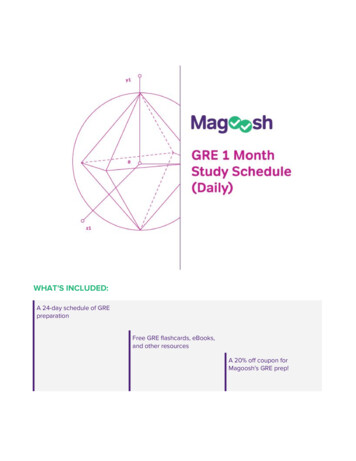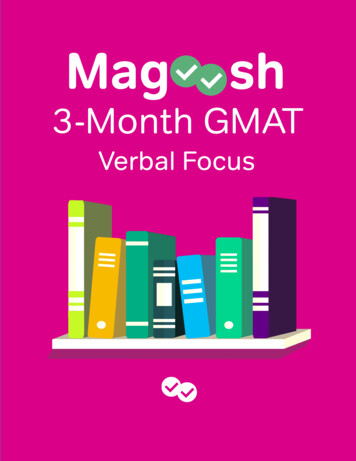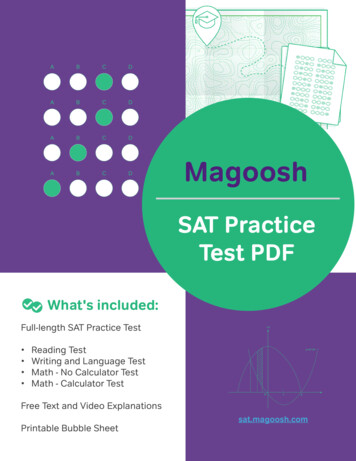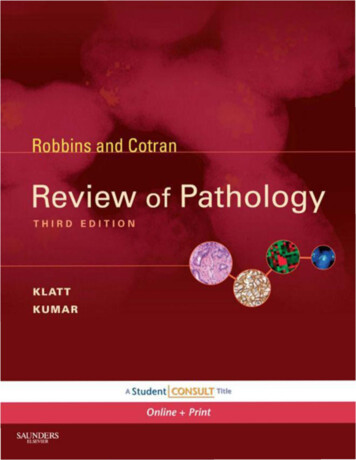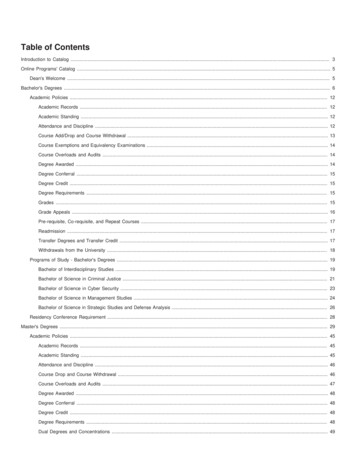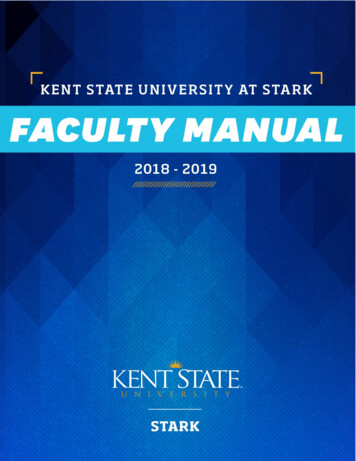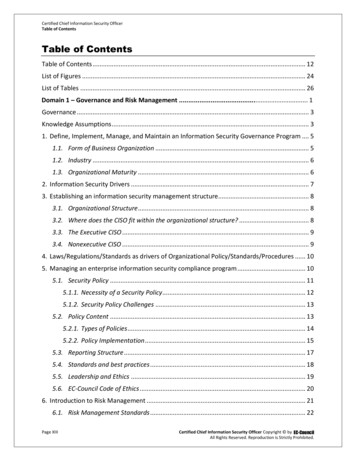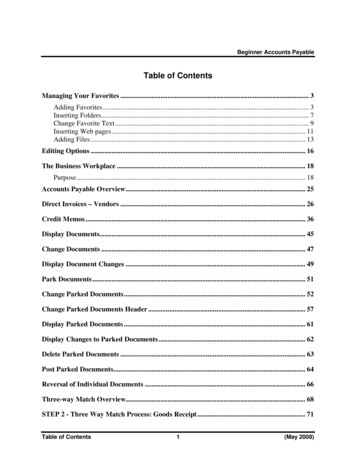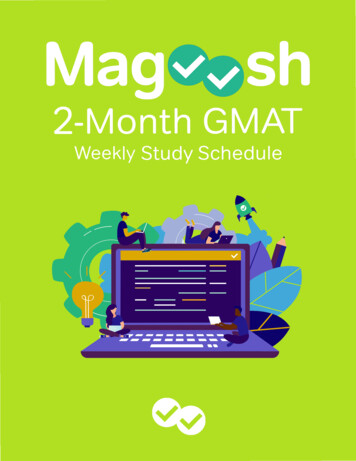
Transcription
Table of Contents oooHow to Use This Study ScheduleEssential MaterialsOptional/Supplemental ResourcesAbbreviations Used in This PlanoThe 2 month GMAT study plan:Week 1Week 2Week 3Week 4Week 5Week 6Week 7Week 8 Test Day Preparation and What to Bring oooooooHow to Use This 2 Month GMAT Study PlanAs you’ll see below, you’ll need six days a week, 1.5 – 2.5 hours a day, to get throughall of this material.Why six? Because you should take a one-day break a week to absorb all of theinformation presented. That said, we still encourage you to read academic articles inyour free time. Whatever you find to be most scintillating—this could be TheEconomist, The Wall Street Journal, The New York Times, Science Magazine, thehistory of hoozits and whatzits—whatever high-level reading materials you prefer.Here are some key tips to keep you going through this 2 month GMAT study plan! Write your goal(s) down in the journal you’ve dedicated to your GMAT studies. (Yes, ajournal! We’ll get to it later.) Think about WHY you’re doing this to yourself. Why are1
you studying for this exam, missing out on hanging out with friends or bingingNetflix? Do you want to go to an Ivy League? Why? Do you want to become a directoron a fancy board? Whatever it is, refer back to these to reinvigorate yourself whenyou’re tired, bored, or ready to give up.Block your study time off in your calendar to hold yourself accountable to the plan.Make sure you’re familiar with the format of the GMAT right from the start. This way,you’ll know what to expect from your practice–like when you can use a calculator andwhen you can’t!You’ll see that early on in the 2 month GMAT study plan, you’ll take a diagnosticpractice test. This will help you get an idea of your current strengths andweaknesses. You can get a rough GMAT score estimate here.After you take a GMAT exam diagnostic, circle back to your practice test to lookcritically at what questions you got wrong and why. Categorize the incorrectquestions: IR questions stumped you? Data sufficiency problems? Quant and Verbalissues? From there, break down what concepts were tested on the incorrectproblems. Geometry? Idioms? That way, you’ll know where to focus your studies.Separately from the diagnostic, identify your target GMAT score. This is likely closelyrelated to your goals; check out GMAT scores for top business schools to zero in onyour ideal range.It’s a good idea to spend 60% of your study for the GMAT on practice questions inyour areas of weakness. The remaining time should be spent watching theexplanation videos and breaking down the reason that you’ve answered thequestions incorrectly.Ensure you mix up the GMAT practice questions and practice videos on each day’slist of tasks.Avoid spending multiple hours sitting down and studying. A couple of hours a day isgreat!Do you need to adapt this study schedule to meet your needs? Check out this blogpost for adjustment tips!Optional prep tip: create a playlist with favorite study songs. We recommendsomething with no words to distract you but still upbeat enough to keep you fromsnoring at your desk or bed. Or listen to this one we made for you.2
Essential Materials1. The official GMAT website—register for an account on the site if you haven’t already.2. Download the Official GMATPrep Software from GMAC.3. GMAC’s The Official Guide for GMAT Review (OG) – The newest edition isthe OG2021. If you are going to buy a new guide, get that one. If you happen to own the OG2020, OG2019, OG2018, OG2017, or even theprevious OG2016, then it would be no problem using either of those with this studyguide.Don’t write in the textbooks. Do all your work on separate paper or on a computer.You will want to keep the textbooks clean, so that later, if you need to look at aproblem again, it is still fresh and unmarked.4. Magoosh GMAT – sign up for the Premium subscription3
5. A journal (paper or on the computer) – throughout this GMAT schedule, I will ask youto take notes. The actual act of writing or typing creates important links in your brainbecause you are using your hands. Even if you never have time to review what youhave written, just the act of writing it will help you learn a little more deeply. Pro tip: At the beginning of your journal, write down why you are studying for theGMAT. Refer back to it when you’ve skipped movie night for the third time, when yourkids have kept you up late, when you’re just plain tired and frustrated of math, orwhenever you need a little extra encouragement!6.Magoosh’s Complete GMAT Guide – This comprehensive web-based guide tothe GMAT gives you the quick but useful overview you need to understand this test.You’ll see how the GMAT is designed and scored, what skills it tests, how to find anduse the best GMAT prep, and how to study for each test section.7. A guide to GMAT Practice Test Resources – This page includes instructions on whereto find good full-length GMAT practice tests, and how to take practice tests andincorporate them into your studies.Optional/Supplemental Resources1. GMAT Club, online forum2. Beat the GMAT, online forum3. Magoosh GMAT Math Flashcards4. Magoosh Idiom Flashcards5. The Magoosh GMAT Diagnostic Test–a great tool to help you identify your strengthsand weaknesses.Because this 2 month GMAT study plan is already filled to the brim with material, wedo not include formal practice with the flashcards. If you find these helpful, pleaseintegrate work with them where you can.4
Abbreviations Used in this PlanIn this plan, we use standard abbreviations for the question types on the GMAT. OG The Official Guide for GMAT ReviewQuantitative Questions PS Problem Solving DS Data SufficiencyVerbal Questions RC Reading Comprehension CR Critical Reasoning SC Sentence CorrectionIn addition, AWA denotes the Analytical Writing Assessment (the essay at thebeginning of the GMAT) and IR denotes the Integrated Reasoning section.* Tasks marked with an asterisk indicate that this resource is only available toMagoosh students—sign up here for a free trial!2 Month GMAT Study Plan: Week 1Week 1, Day 11) Read the official page on the structure of the test, and follow the four individuallinks to read about individual question types.2) In the OG Read the first half of the Math Review, before the math questions in the OG. As youread, write down concepts that are fuzzy/rusty/unfamiliar in your journal.Read the introductory section to PS questions, DS questions, RC questions, and CRquestions. You will find these introductory sections before the banks of that questiontype.5
Take the first half of the 3.1 Diagnostic Test, pp. 19-26, the mathematics section.When you are done, correct your answers. For questions you got right, glance at thesolution, to make sure you got it right for the right reason. For questions you gotwrong, study the solutions in detail, taking notes on anything unfamiliar.3) In the Magoosh product, do: 12 math Problem Solving (PS) questions*8 verbal Sentence Correction (SC) questions*4 verbal Reading Comprehension (RC) questions*Upon completion of each Magoosh question, watch the video explanation followingthe question if you got the answer wrong. NOTE: when you do Magoosh practice questions, do not select individual topics thatare familiar. When you learn a particular lesson, resist the urge to practice thatmaterial right there and then. This plan is based on the philosophy that you shouldsee a random mix of topics every time you practice as you move through the OG.Yes, this means you will make some mistakes in the beginning, especially with topicsyou haven’t learned thoroughly yet, but if you study those mistakes carefully, that willprime your mind for understanding these ideas more deeply when you get to them inthe lessons.Getting questions wrong at the beginning may seem frustrating, but remember thatyou are playing a “longer game”: the point is not instant success at the beginning, butbuilding deeper understanding over time. Also, it’s important to get accustomed assoon as possible to the random mix of topics you will see, one after the other, on testday.4) Watch the following Magoosh videos:Under the Intro to the GMAT section: (OPTIONAL) Intro—Overview of the GMAT(OPTIONAL) Intro—Quantitative Section BreakdownIntro—Computer Adaptive TestingIntro—GMAT ScoresIntro—Pacing, Skipping, and GuessingUnder the Verbal section:(OPTIONAL) Verbal—Intro to Sentence Correction6
(OPTIONAL) Verbal—Strategy—Using SplitsVerbal—Strategy—Ideal vs. Best AnswerUnder the Math section:(OPTIONAL) Math—Intro to GMAT MathMath—Mental Math: Doubling and HalvingMath—Mental Math: Squaring Shortcuts*(As you watch these Magoosh videos, take notes in your journal. You will not havetime to watch all of them more than once, so take notes to get the most out of eachone. Even if you never again look at what you write, the fact that you are writing – andtherefore, processing – what is being said will help you remember it.)Week 1, Day 21) In the Magoosh product, do: 13 math Problem Solving (PS) questions*8 verbal Sentence Correction (SC) questions*5 verbal Reading Comprehension (RC) questions*Upon completion of each Magoosh question, watch the video explanation followingthe question if you got the answer wrong.2) Watch the following Magoosh videos:Under the Intro to the GMAT section:(OPTIONAL) Intro—Verbal Section Breakdown(OPTIONAL) Intro—AWA and IRIntro—GMAT vs. GREIntro—Study Plans & ResourcesIntro—Test DayUnder the Verbal Section:(OPTIONAL) Verbal—Strategy—False Splits & Low-Hanging Fruit*Verbal—About the SC ModuleUnder the Math Section:(OPTIONAL) Math—Mental Math: GMAT Estimation*(OPTIONAL) Math—Mental Math: Dividing by 5*Math—Number Sense*Math—The Use and Abuse of Formulas*Week 1, Day 31) In the OG:7
Finish the Math Review. As you read, write down in your journal concepts that arefuzzy/rusty/unfamiliar.Read the introductory section to SC questions, including the “Basic English GrammarRules” section: as you read, write down in your journal concepts that arefuzzy/rusty/unfamiliar. Read the introduction to the AWA and read the entire IRsection.2) In the Magoosh product, do:13 PS questions*8 SC questions*8 DS questions*3) Watch the following Magoosh videos:Math—Learn from Your Mistakes(OPTIONAL) Math—Fundamentals of Data Sufficiency*(OPTIONAL) Math—DS Elimination MethodMath—Two Kinds of DS Questions*(OPTIONAL) AWA—Intro to AWA(OPTIONAL) AWA—Intro to Argument EssayWeek 1, Day 41) In the OG: Complete the second half of the 3.1 Diagnostic Test, pp. 27-44, the verbal section.When you are done, correct your answers. For questions you got right, glance at thesolution, to make sure you got it right for the right reason. For questions you gotwrong, study the solutions in detail, taking notes on anything unfamiliar.2) In the Magoosh product, do: 12 PS questions*8 SC questions*7 DS questions*3) Watch the following Magoosh videos:Under the Math section: Math—Avoiding Common DS MistakesMath—Properties of Real Numbers*(OPTIONAL) Math—Introductory DS Strategies*(OPTIONAL) Math—Positive and Negative Numbers—I*(OPTIONAL) Math—Mental Math, Addition, and Subtraction*(OPTIONAL) Math—Positive and Negative Numbers—II*8
Under the AWA section: (OPTIONAL) AWA—Logical Fallacies and the Argument Essay*(OPTIONAL) AWA—Brainstorming for AWA*(OPTIONAL) AWA—Writing the Argument Essay*Week 1, Day 51) In the OG, do: 13 PS questions8 SC questionsone RC passage with the associated questionsWhen you do each batch of OG questions, correct yourself right after, and then readthe explanation given whether you got the question right or wrong. At the beginning,be religious about reading the explanations, making sure that, on questions you gotright, you got them right for the right reason. As you continue in your studies, you canjust scan explanations for question that were easy to get right.Note that not all the OG explanations are of high quality, and some are not good atall. As an alternative, for all the questions in the OG, you can see much betterexplanations in our video solutions.2) In the Magoosh product, do: 13 PS questions8 SC questions5 RC questions3) Watch the following Magoosh videos:Under the Verbal section:(OPTIONAL) Verbal—Intro to Parts of Speech(OPTIONAL) Verbal—The Roles of Nouns*(OPTIONAL) Verbal—Verbs*Verbal—Adjectives and Adjectival PhasesUnder the Math section:(OPTIONAL) Math—Order of Operations*(OPTIONAL) Math—Intro to Decimals*(OPTIONAL) Math—Multiples of 10*(OPTIONAL) Math—Intro to Fractions*Math—Mixed Numerals and Improper Fractions9
NOTE: as you finish lesson modules, take the quiz at the end of the module. If youdon’t “pass,” then keep reviewing and take it again, until you can pass that quiz.Week 1, Day 61) Go to the MBA website and download the free software.2) Take the first full-length GMAT on the GMAC software. Go through the entiresolution after you are done, taking notes in your journal on anything you got wrong.Older versions of the GMATPrep software (before version 2.5) do not include an AWAquestion. In that case, to simulate a full GMAT, begin by selecting randomly a promptfrom the back of the OG (if you have a pre-2020 edition) or this MBA.com PDF, andthen take 30 minutes to write the essay in a word processing program. Then, takethe rest of the GMAT using that software.Shortly after you are done, check all your answers, and read the explanations ofeverything you got wrong and everything for which you were unsure. Write in yourjournal anything you need to learn from the mistakes you made. The essay you willeither share with a trusted friend or mentor, or post in the online forums asking forfeedback. See this blog for other options.As much as possible, try to mimic the GMAT conditions. Give yourself relatively shortbreaks in between sections. Only eat the kinds of snacks that you are planning tobring to the real GMAT. Note how your sleep the night before affects your work.
6. Magoosh’s Complete GMAT Guide – This comprehensive web-based guide to the GMAT gives you the quick but useful overview you need to understand this test. You’ll see how the GMAT is designed and scored, what skills it tests, how to find and use the best GMAT prep, and how to study for each test section. 7. A guide to GMAT Practice Test Resources – This page includes instructions on where
